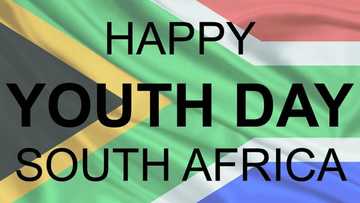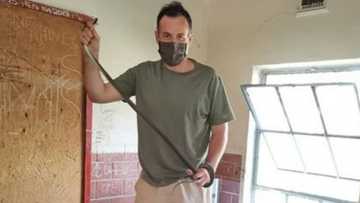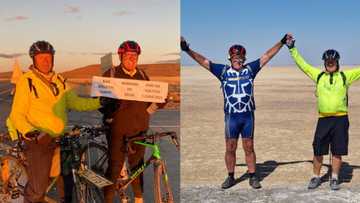Youth Day: Throwback Video of Tsietsi Mashinini Moves Mzansi
Many people think 16 June is just an ordinary holiday celebrating young people for the fun of it, almost like Workers Day. However, the day is so much more and it is an integral part of South Africa's history.
PAY ATTENTION: Follow Briefly News on Twitter and never miss the hottest topics! Find us at @brieflyza!
Sadly, so many young people have no idea what Youth Day is actually about. Briefly News decided to take a look at the history of the holiday.
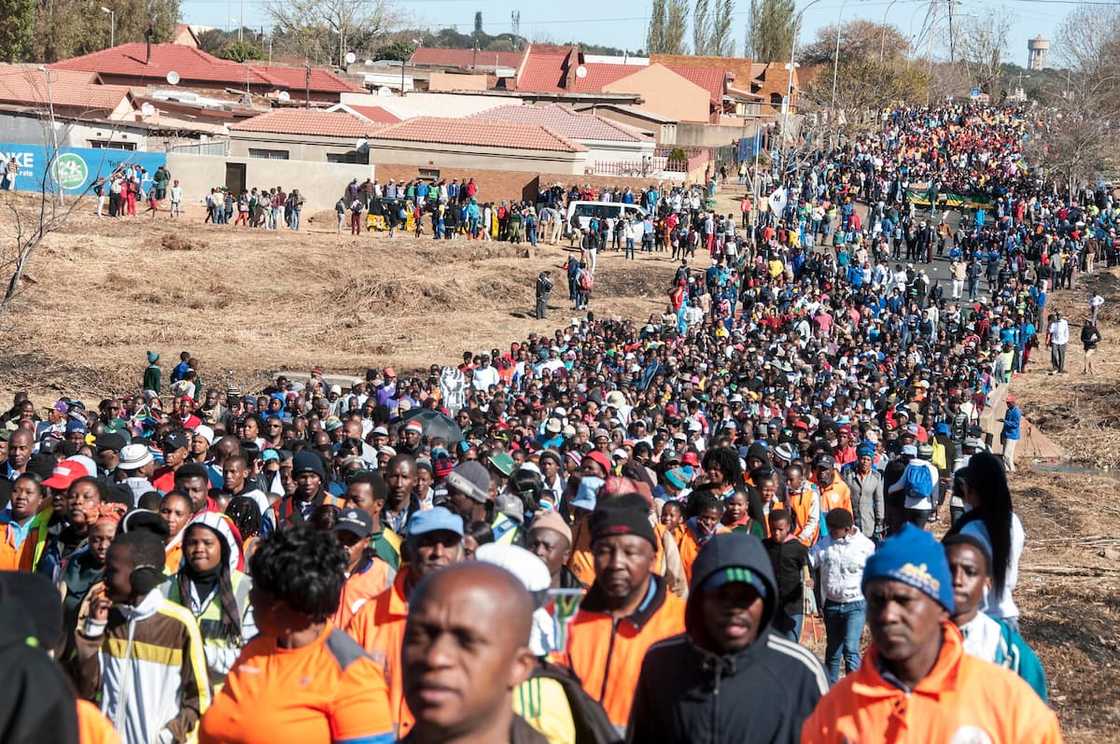
Source: Getty Images
Why we celebrate Youth Day on 16 June annually
Youth Day celebrates the Soweto Uprising, which took place on 16 June, 1976. Every year, South Africans commemorate the historic day by remembering the young people who lost their lives and what they stood for.
The Afrikaans Medium Decree
On the morning of 16 June, 1976, black pupils led a protest in Soweto. The demonstrations historically had over 20 000 participants. The pupils protested against the apartheid government after Afrikaans was introduced as the medium of teaching in local schools. Black South African high schools preferred English as opposed to Afrikaans, which was associated with the oppressive previous regime. The 1974 Afrikaans Medium Decree, however, forced schools to use Afrikaans and English in equal measures. According to Wikipedia, the Regional Director of Bantu Education, JG Erasmus, told principals that from 1 January, 1975, all pupils from Grade 7 should be taught in Afrikaans in several subjects, including mathematics and social studies. General science and practical subjects, such as homecraft, woodwork, metalwork, art and agricultural science, were taught in English. Indigenous languages were still the medium of teaching for religious instruction, music and physical culture. Afrikaans learners on the other hand could take most classes in their home language.
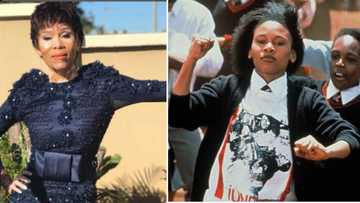
Read also
Leleti Khumalo remembers the youth of 1976 30 years after 'Sarafina': "Your sacrifice will never be forgotten"
PAY ATTENTION: check out news exactly for YOU ➡️ find "Recommended for you" block and enjoy!
The black community opposed the Afrikaans Medium Decree
The black population was not a fan of the decree and it faced a lot of criticism from some of Mzansi's most well-known struggle icons. Desmond Tutu said Afrikaans was "the language of the oppressor."
"A black man may be trained to work on a farm or in a factory. He may work for an employer who is either English-speaking or Afrikaans-speaking and the man who has to give him instructions may be either English-speaking or Afrikaans-speaking. Why should we now start quarrelling about the medium of instruction among the black people as well?... No, I have not consulted them and I am not going to consult them. I have consulted the Constitution of the Republic of South Africa," Punt Janson, the Deputy Minister of Bantu Education, said at the time.

Read also
Youth Day: 5 Inspiring stories of graduates who filled Mzansi with pride and reminded people of their power
Tensions continued to rise and on 30 April, 1976, Orlando West Junior School pupils in Soweto started protesting by refusing to go to school.
The Soweto Uprising
On 16 June, 1976, between 10 000 and 20 000 black learners showed up to protest the decree and demand the same rights as Afrikaans pupils.
The Soweto Students' Representative Council's (SSRC) Action Committee organised the protest and some of the participants hadn't even known about the protest until they arrived at school that morning.
The committee promised good behaviour and got the teachers' backing. However, they soon found out the apartheid police barricaded the route the learners planned to use. The action committee leader asked the young protestors to remain calm and not agitate the authorities.
According to South African History Online, Tietsi Mashinini climbed up onto a tractor and said:
"Brothers and sisters, I appeal to you - keep calm and cool. We have just received a report that the police are coming. Don't taunt them, don't do anything to them. Be cool and calm. We are not fighting."
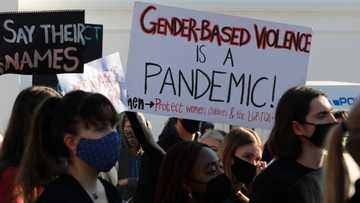
Read also
"Not even the police protect women": 4 Women share harrowing experiences of assaults and re-victimisation by cops
Instead of starting a fight, thousands of learners decided to march a different route. They found themselves walking to Orlando High School with signs reading "Down with Afrikaans", "Viva Azania" and "If we must do Afrikaans, Vorster must do Zulu".
All hell broke loose
Tensions reached a breaking point after cops set a trained canine on the protestors, who reacted by killing the animal.
The police then opened fire on the children, killing 23, according to the government's numbers, on the first day of the Soweto Uprising. However, it has been reported that 176 children died with some estimates suggesting the actual number of fatalities was closer to 700.
Over a thousand people were injured and emergency clinics were swamped. The apartheid government wanted records of the injured protestors so that they could be prosecuted later.
On the second day, 17 June, more than 1 500 heavily armed police officers were dispatched to manage the situation. Briefly News learned the cops were carrying automatic rifles and driving in armoured vehicles. Helicopters also patrolled from the sky.
Hector Pieterson
After police officers opened fire on protestors on the first day of the Soweto Uprising, photographer Sam Nzima captured a heartbreaking photo that would become the symbol of the historic event.
The image shows a teen, Mbuyisa Makhubo, carrying the body of 12-year-old Hector Pieterson. Makhubo was accompanied by Hector's heartbroken sister, Antoinette Peterson.
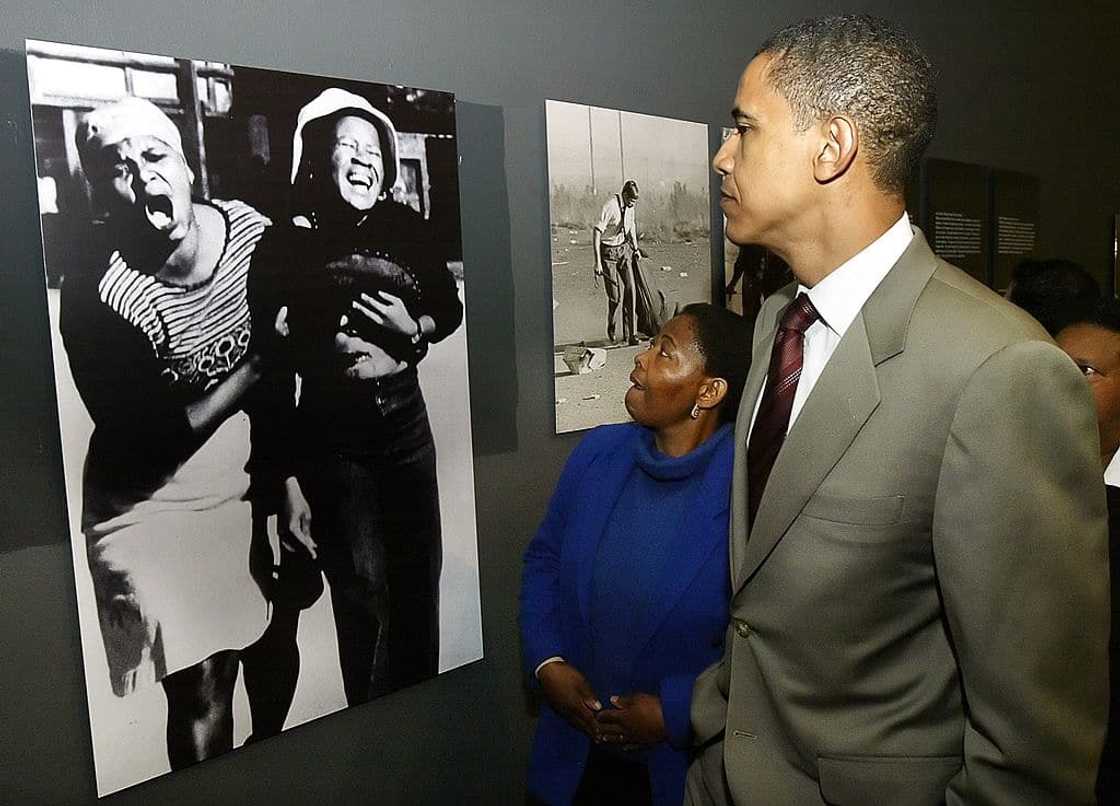
Source: Getty Images
The Soweto Uprising strengthened the ANC and PAC anti-apartheid movements
Violence did not just break out in Soweto on 16 June, it spread across South Africa and the event gave the ANC and PAC the power to recruit more black people to their cause.
With black people feeling in danger of arrest more underground activities were launched and young people were recruited by the parties and for military training.
Even though Nelson Mandela wasn't released for another 14 years, the Soweto Uprising played an important role in the fight against apartheid.
Video of Tsietsi Mashinini moves Mzansi
A video of Tsietsi Mashinini was shared online on Youth Day and it inspired South Africans. Social media users called Mashinini a born leader.
Siphiwe Goge, @SiphiweTumi, commented:
"What a great leader. The Son of the Soil."
Take a look at the video below:
Unemployment - the modern-day youth problem
Sadly, even 27 years after the fall of the previous regime, young people still have to fight for their rights. One of the most common problems amongst young people today is unemployment, even with a degree.
Briefly News previously reported a young woman, @KSekgetle, called on President Cyril Ramaphosa not to speak on 16 June.
She said:
"Dear President @CyrilRamaphosa. This year, on Youth Day, please don't address us, just don't do/say anything. Sincerely... An unemployed young graduate."
@KSekgetle is not alone, many young people echoed her sentiment online.
We took a look at some of the posts:
Sizwe Mpofu-Walsh, who goes by the Twitter handle @SizweMpofuWalsh, wrote:
"#YouthDay has become about old politicians deflecting from the crises of the present by invoking the victories of the past."
Another tweep, @black_Azannia, added:
"Unemployment is evil, robs you of dignity, makes you question a lot of things, causes depression, reduces you to begging and pleading beyond normal standards of asking for help. It has psychologically incapacitated many & traumatized a generation #16June2021 #unemployment #YouthDay."
PAY ATTENTION: check out news exactly for YOU ➡️ find "Recommended for you" block and enjoy!
Source: Briefly News

